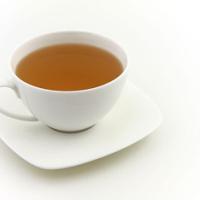
Maths in a minute: Diffusion
Whenever you smell the lovely smell of fresh coffee or drop a tea bag into hot water you're benefiting from diffusion: the fact that the random motion and interaction of particles in the mixture causes them to spread themselves around. It's this process that wafts coffee particles towards your nose and allows the tea to spread around the water. Diffusion underlies a huge number of processes — from food digestion to the generation of patterns in animal coats — and it has been studied intensively for over 150 years.
The first to make progress in understanding diffusion was the mathematician Joseph Fourier in the early nineteenth century, when he became interested in the way heat propagates in solid bodies. If you heat up one end of a metal rod, what will the temperature be at any point along the rod at some time in the future?
The diffusion equation
Fourier realised that a relatively simple equation describes the way temperature, $T$, changes at a given point, $x$, on the rod at any instant of time $t$:
$$\frac{\partial T}{\partial t} (x,t) = k \frac{\partial ^2 T}{\partial x^2}(x,t).$$
The left side of the equation describes how quickly the temperature $T$ changes (the rate of change) at a point $x$. (You can read more about these mathematical descriptions of rates of change, called differential equations and partial differential equations, in our easy introduction.)
The $k$ on the right side of the equation is a constant number that in Fourier's case describes how quickly heat is conducted through the metal. More generally this is known as the diffusion coefficient.
The other term on the right side is a little more complicated (it's a higher order derivative) but essentially encapsulates that the energy is moving from the hotter parts of the metal bar to the colder parts.
Fourier's equation is now known as the diffusion equation and works not just for the propagation of heat, but to describe any situation where the concentration of something changes over time thanks to some underlying random process. (Note that we have simplified the equation here to look at diffusion just in one dimension given by the variable $x$, but it can be rewritten to describe more complex settings.)
You can read an entertaining, more detailed, but straightforward introduction to diffusion in How long can we survive a zombie invasion? And you can read more about how diffusion is used in a number of surprising ways in Police and thieves, How the leopard got its spots and Eat, drink and be merry.
This introduction to diffusion is based on Carola Bibiane Schönlieb's article Restoring Profanity and on the article How long can we survive a zombie invasion? by Thomas Woolley, Ruth Baker, Eamonn Gaffney and Phillip Maini. The image of the cup of tea is by Petr Kratochvil and is in the public domain.
This article forms part of our collaboration with the Isaac Newton Institute for Mathematical Sciences (INI) – you can find all the content from the collaboration here.
The INI is an international research centre and our neighbour here on the University of Cambridge's maths campus. It attracts leading mathematical scientists from all over the world, and is open to all. Visit www.newton.ac.uk to find out more.
